10 Superior Strategies to Increase Your Patient Volume
At the end of the day, patient volume is what makes or breaks your practice. It doesn’t matter how great of care you provide. If you can’t sustain a consistent amount of patients coming into your office, you’ll lose revenue and eventually have to close your doors.

At the end of the day, patient volume is what makes or breaks your practice.
It doesn’t matter how great of care you provide. If you can’t sustain a consistent amount of patients coming into your office, you’ll lose revenue and eventually have to close your doors.
Patient traffic has a direct impact on your revenue, word of mouth marketing, and community respect for your business.
But recent events within the healthcare space haven’t helped. Mega-mergers across the industry force patients to flock towards urgent care facilities and retail clinics while practices become an afterthought.
As the owner of a practice, you’re confident in the services you provide. You can offer a more personal experience than any multi-billion dollar facility ever could.
Luckily, this is also true when it comes to increasing your patient volume. There are certain strategies that, if you play your cards right, can cram your waiting room with new clients.
Here are 10 strategies to increase your patient volume.
Identify High-Risk Patients
Out of everyone who comes into your office seeking treatment or services, at-risk patients take the majority of your time and resources.
They might show up repeatedly in the emergency room, have complex medical problems, have low health literacy, use a number of medications, visit multiple specialists, etc. You’ve heard coworkers refer to them as “frequent-flyers.”
Everyone who steps into your office deserves adequate care, there’s no denying that. But by identifying those who are at-risk, you’ll be able to increase your patient volume. After all, hospitalization is 32% more likely for this group.
Once you’ve classified your clients based on the amount of care that they’ll need, you can preemptively target those who require your attention the most.
Providing care at the right time to this group of patients is essential.
Use a Modern, Fast Website Theme
Do you remember what websites used to look like in the early ages of the internet? If not, some of these fossils still exist. Here’s an example of a bio page from Warner Brothers’ Space Jam promotional website for the 1996 blockbuster movie.

The ‘90s were thirty years ago, so this example might be a little bit extreme. Here’s an example of Polaroid’s website from 2002.

Getting a glimpse of these websites washes us over with feelings of nostalgia. It takes us back to a time when having a domain and posting a webpage once could suffice as marketing.
But, they’re an eyesore to modern-day web designers and some healthcare organization’s websites don’t look much better than these.
Your website is a direct reflection of your practice. How it looks and behaves should be one of your priorities. That’s because 83% of patients visit a hospital website before scheduling an appointment.
As a patient, if you wanted to switch doctors and visited a website that was reminiscent of either the examples above, you’d probably click out of it immediately. In either case, it doesn’t matter how great their copy within their website is if it looks like it has been over a decade since its last update.
That’s why web design plays such an important role in your patient volume and its often something that’s overlooked.
If you’re the administrator for your website and it’s starting to look a little bit outdated, freshen things up with a new theme.
Beyond the design aspects of your website, the speed at which it loads is also important. Just a 1% increase in your website’s load time decreases your appointment conversion rate by 7%. That’s only in the eyes of visiting users.
Google also takes loading speed into account when ranking websites on their front page. They’ve taken it into account since 2009.
If you take your website seriously and ensure that it’s user experience is on par with other polished landing pages, expect more people to come through your doors.
Make Sure You're Mobile Friendly
Mobile Website Design
A mobile-friendly website is an essential piece in the puzzle that is increasing your patient volume.
Around 85% of Americans use a smartphone according to the Pew Research Center. 100% of surveyed individuals between the ages of 18 and 49 own some kind of mobile device with over 95% being a smart device.
The study from PatientPop that I mentioned earlier also found that 75% of people have looked online to find out about a provider like you or different kinds of care. That’s 3 out of 4 of your potential patients!
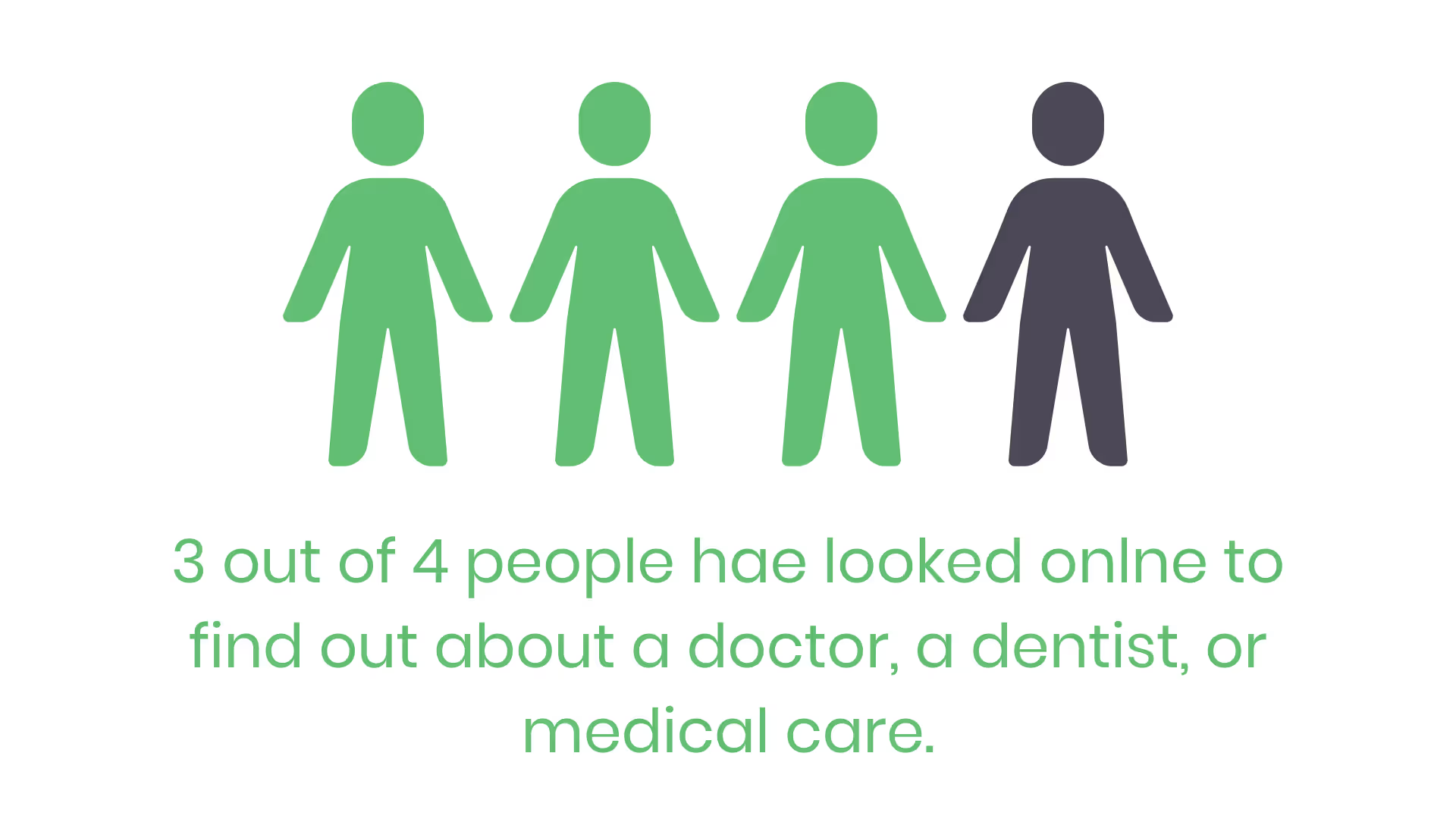
Most potential patients search for physicians and medical practices on their phones or tablets. They need to be able to find information about your practice online and that can only happen if your website provides a streamlined experience.
Online Scheduling
The most important aspect of a mobile-friendly website is a clear call to action button to schedule an appointment.
Someone could be reading reviews, watching videos introducing your doctors, or just looking at your office location. If they like the content provided on your website, they’ll want an easy way to schedule an appointment.
Make it easy for people to make an appointment with a large call-to-action button that can be easily tapped on a tablet or smartphone.
You should have large buttons to click. Buttons for choosing the day, time, doctor they want to see, along with areas to enter in the information you need like their name, email address, etc.
Mobile Payment Portal
The traditional mail system has the nickname “snail mail” for a reason; its services take “forever” in today’s high-speed world and often causes delivery errors. Not only can traditional mail lead to an unintentional HIPAA violation, but it also means it takes a considerable amount of time for you to get paid!
The majority of people pay for things electronically, especially during the pandemic. With this social shift to paying online, adults have become more tech-savvy and developed new habits.
It’s no wonder that most patients choose to pay electronically.
Modern-day patients prefer paying online. In the past, mailing statements worked well, that’s simply no longer the case. Today’s generation of patients prefers digital options because they require less time and effort from their busy schedules.
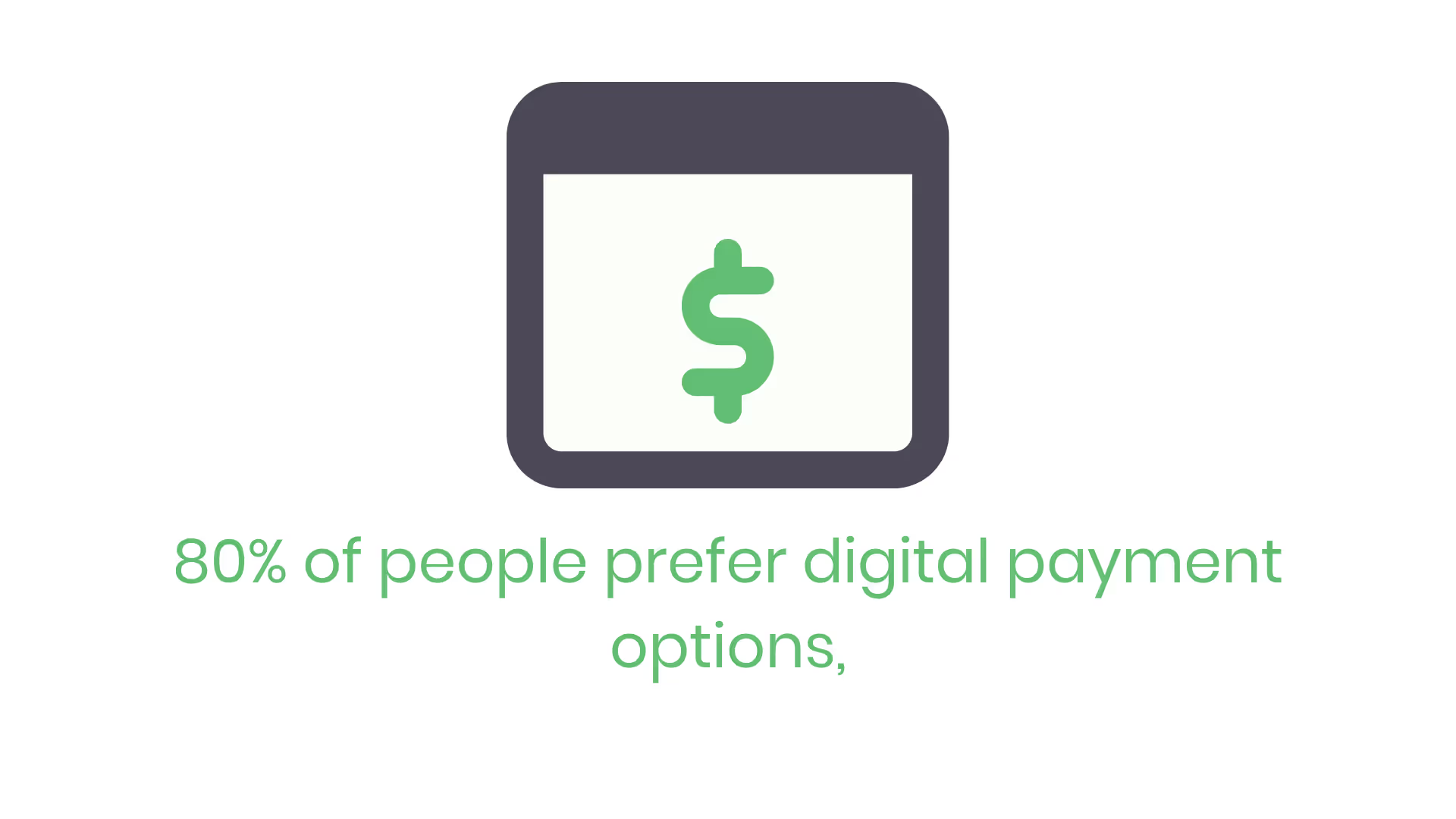
Not only will you see your payments come in faster, but you’ll also have more secure payments. Checks won’t get lost in the mail back to your organization and bills won’t accidentally go to the wrong address. Thus, you’re less likely to experience a HIPAA Privacy Rule violation.
Thus, you should seriously consider hopping on the online payment portal trend before your patients leave your practice and your volume reduces.
Reduce No-Shows with Push Notifications
Patients that miss their appointments cause a domino effect to occur. Not only are you not treating the patient, but you also don’t get paid by them, impacting your bottom line.
No-shows also mean wasted prep work, which means wasted payroll money. Additionally, you could’ve filled the empty spot in your schedule with someone else. This might’ve saved your revenue from the impact.
So how do you make sure that patients actually get to their appointments?
The answer is simple: mobile push notifications.
When a patient schedules their appointment, make sure to get their phone number so you can send them a text notification. Why? 66% of patients said they want to receive appointment reminders via text message.

If you have a patient’s email, make sure to send them an appointment reminder twice.
Before you think to yourself “no one checks their email anymore so this is never going to work”, here is a surprising fact: 99% of consumers check their email every day.
The first reminder is to confirm the appointment the moment they finish scheduling. This way, the patient can make a reminder in their calendar as an alarm or pop-up banner. It reduces the risk of overscheduling themselves.
The second email can occur at your discretion. Whether the day before appointment day or 3 days before, it's up to you and your policies. This email reminds the patient that they have an appointment and puts the information at the forefront of their mind, lessening the chance that they forget.
The last way to reduce no-shows isn’t exactly with a reminder. More like a popup during the scheduling process and a mild threat when popups do occur.
What am I talking about?
Well, this is where a no-show policy can be useful. If someone knows there will be a fee with ghosting the doctor’s office, the patient will be less likely to miss an appointment.
This also means that you will be able to recuperate some of the missed revenue associated with no-shows. Not the best situation, but definitely better than not having the fee at all.
Setup Google My Business
To increase your patient volume, you need to make it easy for them to find you. The best way to find a business is through...Google. That’s not a surprise.
The last time you went to that new barbershop or salon across town, you looked it up on your phone to see what it was like before going there. If you didn’t you’re in the minority; 88% of consumers who do a local Google search visit or call a store within a day.
If the barbershop didn’t utilize Google My Business your search would look something like this…
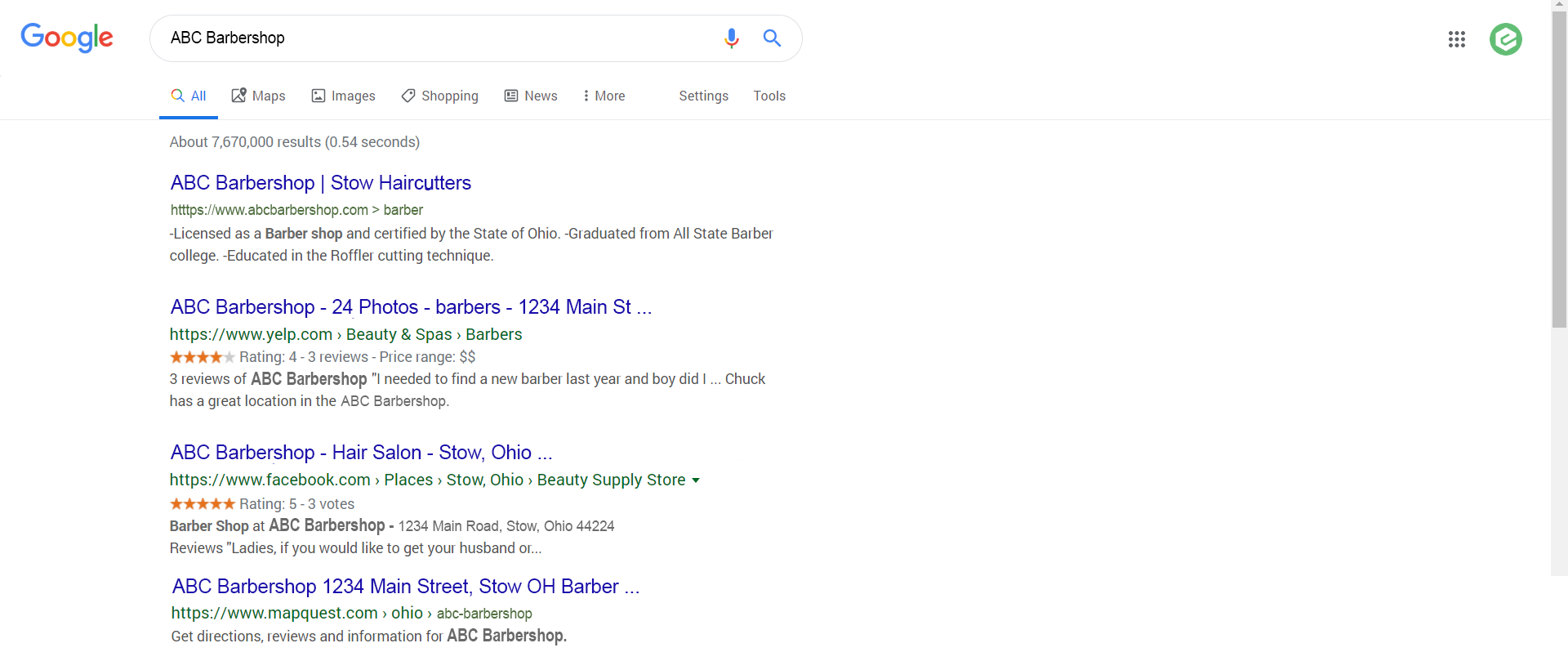
It’s clear that our example business, ABC Barbershop, is active on other review websites such as Facebook and Yelp. But in order to find their location, phone number, or contact information users have to click into the website and find it themselves.
This takes an unnecessary amount of time and Google recognizes that. Because of this reason, they’d rank this company lower in their maps section.
If ABC Barbershop utilized the Google My Business Feature, their results page would look something like this…

Google My Business provides an area on the righthand side of its results page to provide useful information to users on the businesses they’re searching for.
If you use this feature, you can choose what information goes there, provide an area for patient testimonials, add pictures and videos, answer questions, and link directly to your social media channels. You’ll also rank higher when people search in your area using phrases like…
- “Doctor near me”
- “Healthcare near me”
- “Where’s the nearest doctor?”
- “Doctor in X location”
The easier it is to find your practice, the more likely it is that new clients will come streaming in and everything starts with Google.
Chronicle Your Expertise Through a Blog
Every minute 70,000 health-related searches get entered into Google. But is all of the information these patients looking up accurate?
JAMA’s 2016 research comparing physician and computer diagnostic states otherwise. They found that a doctor’s diagnosis is much more accurate than that of online symptom checkers found on the web.
Even without that research, as a physician, you’re an expert in your field. You know things that most patients don’t. You don’t need to hear that from me since that’s the reason why patients come to visit you in the first place.
But imagine if you could lead even a quarter of a percentage of those daily health-related searches traffic to your website? We did the math and that would be over 250,000 users per day.
Realistically, that’s more traffic than a majority of websites and getting to that point takes a long time. However, getting more traffic leads to a higher patient volume and it all starts with a blog.
Sure, you already have a nice, user-friendly website but if there are only a few generic pages you won’t get traffic beyond locals searching for you.
Luckily, blog posts are pages and if the information within it answers questions people search for, you’ll start to see your traffic skyrocket over time.
Google badly wants accurate health information on their search engine. As evidence of this, back in August of 2018, they released their “Medic Update.” One of the biggest takeaways from this update was their E.A.T. algorithm. The algorithm ranks blogs with expertise, authority, and trustworthiness higher than others.

As a healthcare professional, you already have all of these. Start blogging and get yourself more patient volume.
Generate Reviews to Protect Your Reputation
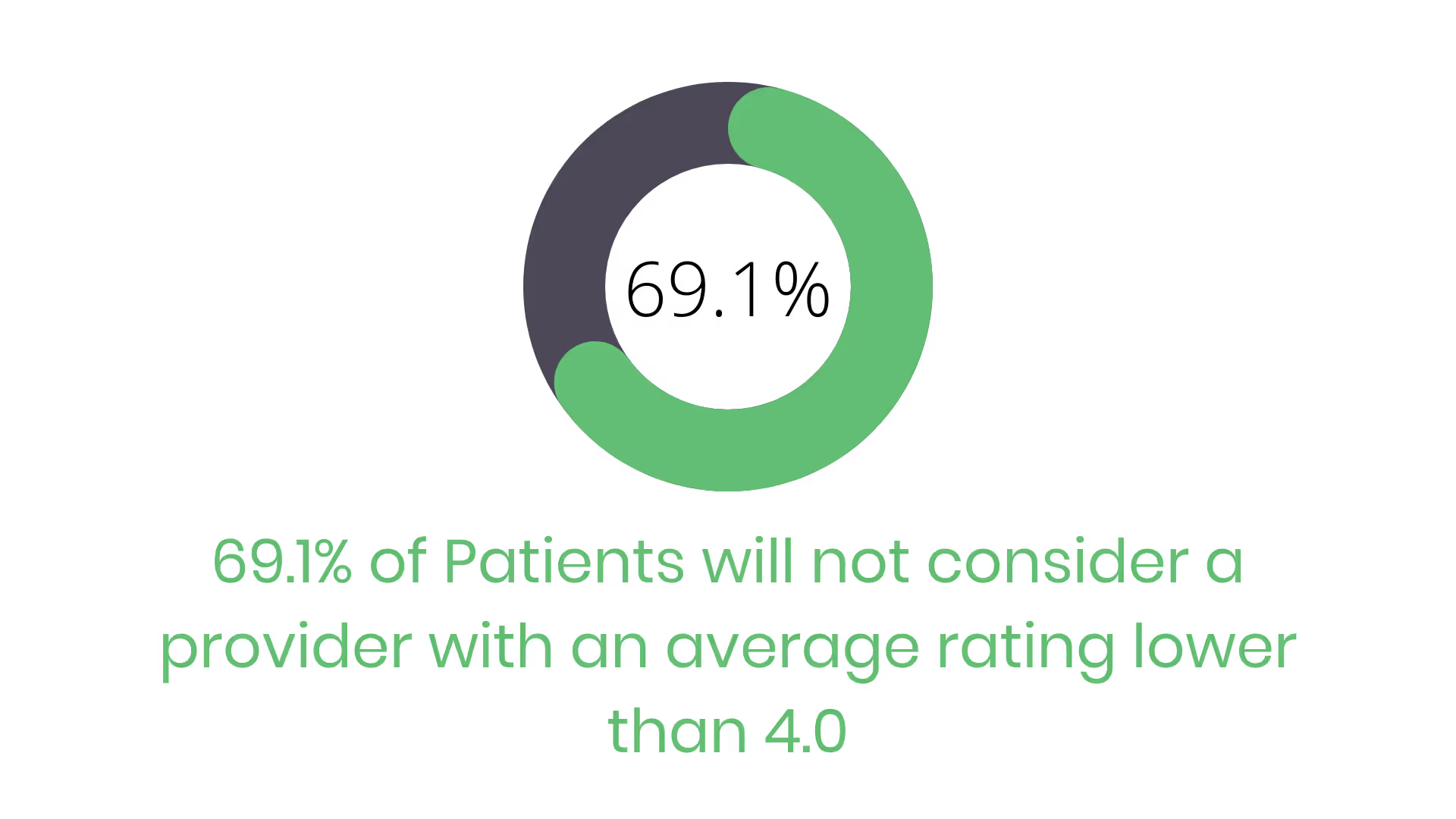
Another survey from Patient Pop showed that 74% of patients find online reviews very or extremely important. This is why publishing reviews of current patients is a huge factor in generating new patients for your practice.
Potential patients want to hear from people who have already seen a doctor at your organization.
The same study also found that 69% say they will not consider a provider with an average star rating lower than 4.0 out of 5 stars.
You can display these reviews in a carousel feature on your website’s homepage or on a specific page that’s dedicated to reviews.
This is important for a few reasons.
First, reviews will boost the SEO of your practice across search engines and social media. It will help your potential patients find your business online.
Second, the reviews give your doctors a reputation that 8 out of 10 people will read.
Make sure potential patients see that your current patients like your physicians by reading reviews.
Use The Right Social Media Channels
Social media is something you simply can’t ignore anymore, it affects all of us in some way. Yes, it’s something your practice should utilize. It’ll help you spread the word about your services while helping you source patient testimonials.
However, using social media is one aspect. Getting interactions is a totally different story. There are 60 million active business pages on Facebook alone.
So if you’re a small practice and your workforce is already stretched thin, posting sporadically across two or three different social media channels won’t help.
Instead, think about your patients as a whole…
- What’s their age?
- When you talk to them during their appointments, what do they like to do for fun?
- Do they have similar interests?
- What are their opinions?
By asking yourself this handful of questions, you’re learning more than just their demographic. You’re diving into their psychographics as well, which are traits pro marketers analyze on a daily basis.
For social media, though, you won’t have to do that much psychographic research to find out which channel you should target to increase your patient volume. Once you have a general idea, Google statistics about different social media channels.
As an example, we looked at what type of person uses TikTok. First, we simply Googled, “who uses TikTok”.
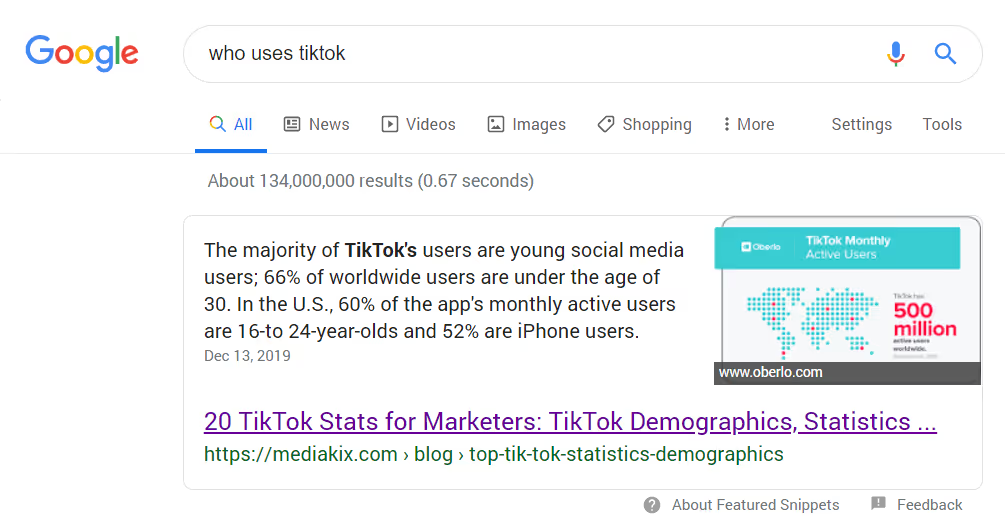
The number one ranking website immediately gave us promising results by stating that 60% of the app’s monthly active users are between 16-24 years old.

So if you’re a geriatric doctor and the majority of the clients you see are 65 or older, creating a TikTok won’t help you increase your patient volume. Coming to that conclusion took us less than 5 minutes!
Outside of the obvious HIPAA risks involved with using social media as a healthcare provider, it can help you get more people through your doors. But it won’t work unless you use a social media channel that resonates with your patients.
Stay in Contact With Your Patients With a Newsletter
Once your patients leave from their appointment, do you stay in contact with them other than your standard follow-up process?
The only time you reach out to your patients doesn’t have to be for reminders, insurance, and prescription refills. Although staying professional isn’t necessarily bad, it doesn’t help establish a doctor-patient relationship. Patients end up only thinking of you as a place to go if they don’t feel well.
But you can turn your practice into a tight-knit community with one simple change, an email newsletter.
You can keep them updated on news surrounding your practice, patient success stories, events you’re holding, etc. Email is convenient and used often, 99% of consumers check their email every day.
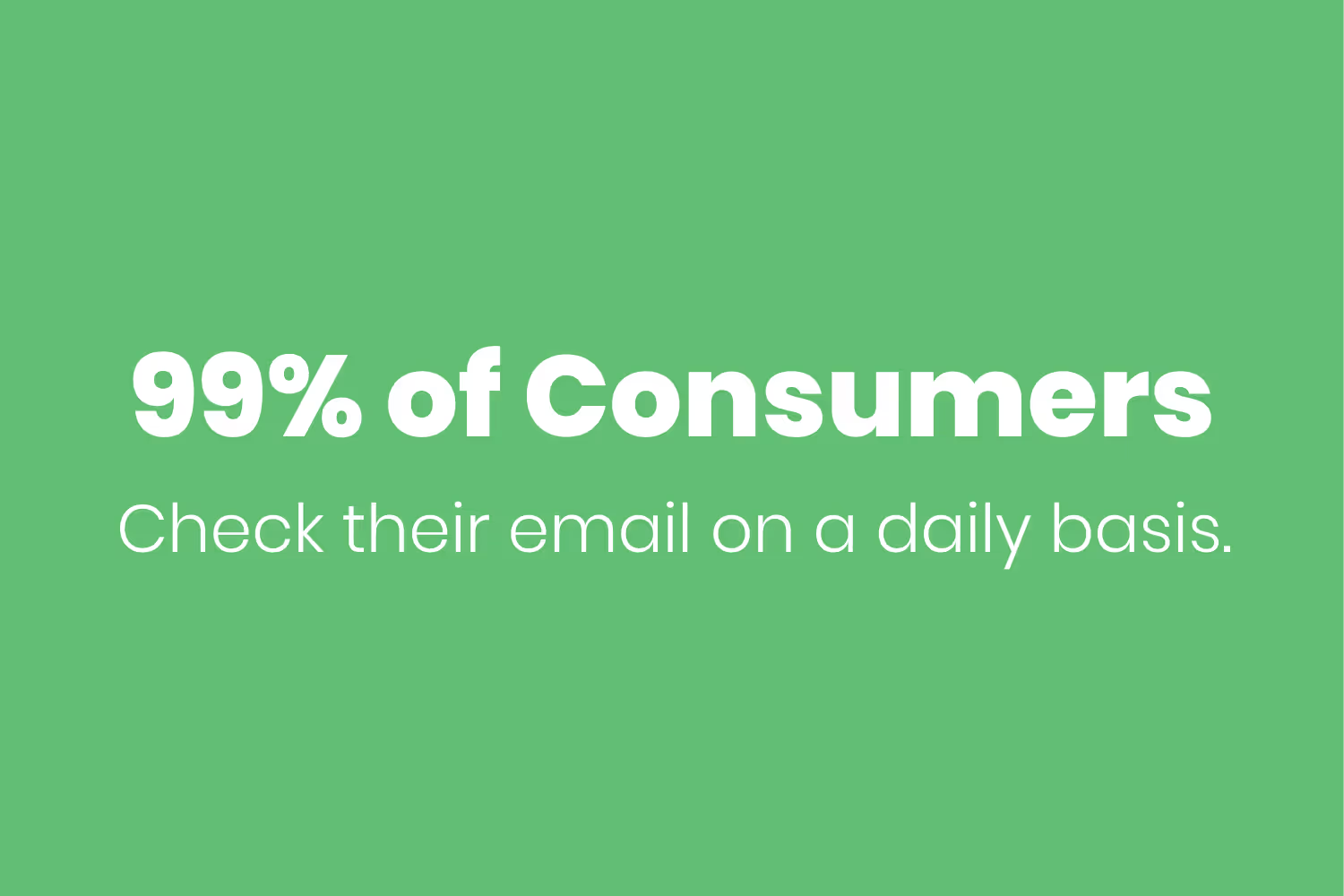
Offer ways for people to signup to receive your newsletter on your website via a sleek landing page. Also, add a place for users to signup throughout your blog posts. That way, when new users find your website they can start receiving your newsletter.
As you start to nurture them, they’ll become more familiar with your organization. Before you know it, these users will end up walking through your doors.
Research Other Strategies
Whenever you’re short on ideas you can research strategies other practices implemented to increase their patient volume.
A lot of this is trying out new strategies and focusing on what works. Some massive healthcare organizations and hospitals have entire teams devoted to getting more clients through their doors.
It’s always a good idea to figure out what’s working for related organizations, put your spin on it, and try it out to see if it works. Ask specialists in your network if anything they’ve done to increase their patient volume worked well. They’ll be glad to tell you about their successes while you take mental notes of them.
Also, take a look at the websites of other organizations. Unless they’re in the same network, no two healthcare websites are the same.
You can take a look at what images they use, their overall design, etc. Or you can dig deeper by using websites like Ubersuggest to see their website traffic, which of their pages are most popular, and what keywords they write about.
Looking at others in your industry for ideas isn’t a bad thing, it’ll help get your brain in the right mindset to think about how to get more patients.
More Volume Means More Claims

Once you’ve implemented a comprehensive strategy, remind yourself of what’s required to take on more patients before it starts to pay off.
This means that you’ll have to forecast ahead of time so that you can prepare your front-end and back-end process for handling claims.
From the front-end standpoint, getting more patients through your door only to turn them away because you can’t handle the added claim work is embarassing. It would also discourage your entire staff.
You also need to make sure your denial management workflow is ready for the added traffic on the back-end. If it’s not and you accept more patients, you’ll end up losing a ton of revenue.
Conclusion
The amount of creative strategies you could use to increase your patient volume is endless. You don’t have to limit yourself to what’s on this list.
Brainstorm with your team and see if they have any ideas we might have missed.
Select a few that you have the bandwidth for and stick to them. These aren’t, set it and forget it ideas, you’ll need to work at them to see success.
Use these strategies in a consistent, organized way in order to see more patient volume in your practice.
Emphasize your product's unique features or benefits to differentiate it from competitors
In nec dictum adipiscing pharetra enim etiam scelerisque dolor purus ipsum egestas cursus vulputate arcu egestas ut eu sed mollis consectetur mattis pharetra curabitur et maecenas in mattis fames consectetur ipsum quis risus mauris aliquam ornare nisl purus at ipsum nulla accumsan consectetur vestibulum suspendisse aliquam condimentum scelerisque lacinia pellentesque vestibulum condimentum turpis ligula pharetra dictum sapien facilisis sapien at sagittis et cursus congue.
- Pharetra curabitur et maecenas in mattis fames consectetur ipsum quis risus.
- Justo urna nisi auctor consequat consectetur dolor lectus blandit.
- Eget egestas volutpat lacinia vestibulum vitae mattis hendrerit.
- Ornare elit odio tellus orci bibendum dictum id sem congue enim amet diam.
Incorporate statistics or specific numbers to highlight the effectiveness or popularity of your offering
Convallis pellentesque ullamcorper sapien sed tristique fermentum proin amet quam tincidunt feugiat vitae neque quisque odio ut pellentesque ac mauris eget lectus. Pretium arcu turpis lacus sapien sit at eu sapien duis magna nunc nibh nam non ut nibh ultrices ultrices elementum egestas enim nisl sed cursus pellentesque sit dignissim enim euismod sit et convallis sed pelis viverra quam at nisl sit pharetra enim nisl nec vestibulum posuere in volutpat sed blandit neque risus.

Use time-sensitive language to encourage immediate action, such as "Limited Time Offer
Feugiat vitae neque quisque odio ut pellentesque ac mauris eget lectus. Pretium arcu turpis lacus sapien sit at eu sapien duis magna nunc nibh nam non ut nibh ultrices ultrices elementum egestas enim nisl sed cursus pellentesque sit dignissim enim euismod sit et convallis sed pelis viverra quam at nisl sit pharetra enim nisl nec vestibulum posuere in volutpat sed blandit neque risus.
- Pharetra curabitur et maecenas in mattis fames consectetur ipsum quis risus.
- Justo urna nisi auctor consequat consectetur dolor lectus blandit.
- Eget egestas volutpat lacinia vestibulum vitae mattis hendrerit.
- Ornare elit odio tellus orci bibendum dictum id sem congue enim amet diam.
Address customer pain points directly by showing how your product solves their problems
Feugiat vitae neque quisque odio ut pellentesque ac mauris eget lectus. Pretium arcu turpis lacus sapien sit at eu sapien duis magna nunc nibh nam non ut nibh ultrices ultrices elementum egestas enim nisl sed cursus pellentesque sit dignissim enim euismod sit et convallis sed pelis viverra quam at nisl sit pharetra enim nisl nec vestibulum posuere in volutpat sed blandit neque risus.
Vel etiam vel amet aenean eget in habitasse nunc duis tellus sem turpis risus aliquam ac volutpat tellus eu faucibus ullamcorper.
Tailor titles to your ideal customer segment using phrases like "Designed for Busy Professionals
Sed pretium id nibh id sit felis vitae volutpat volutpat adipiscing at sodales neque lectus mi phasellus commodo at elit suspendisse ornare faucibus lectus purus viverra in nec aliquet commodo et sed sed nisi tempor mi pellentesque arcu viverra pretium duis enim vulputate dignissim etiam ultrices vitae neque urna proin nibh diam turpis augue lacus.


.avif)

